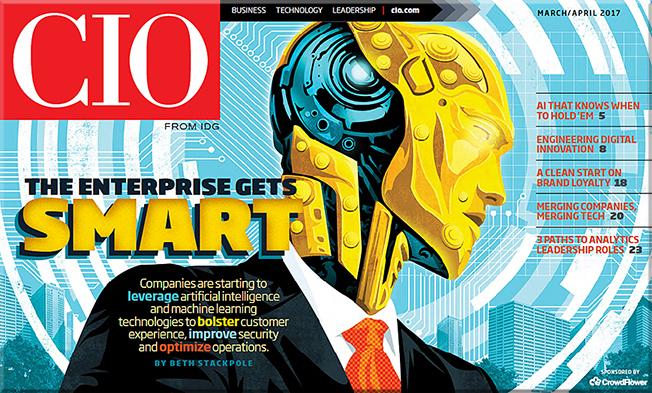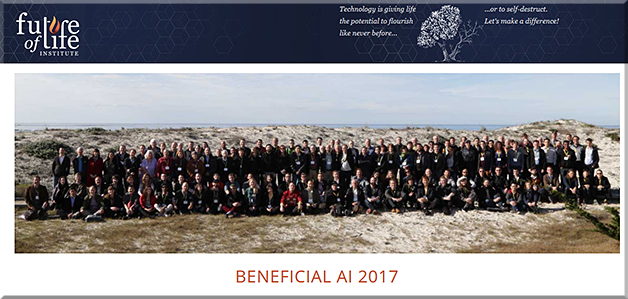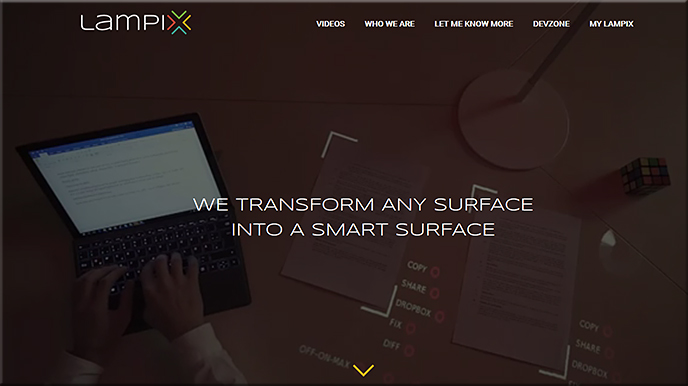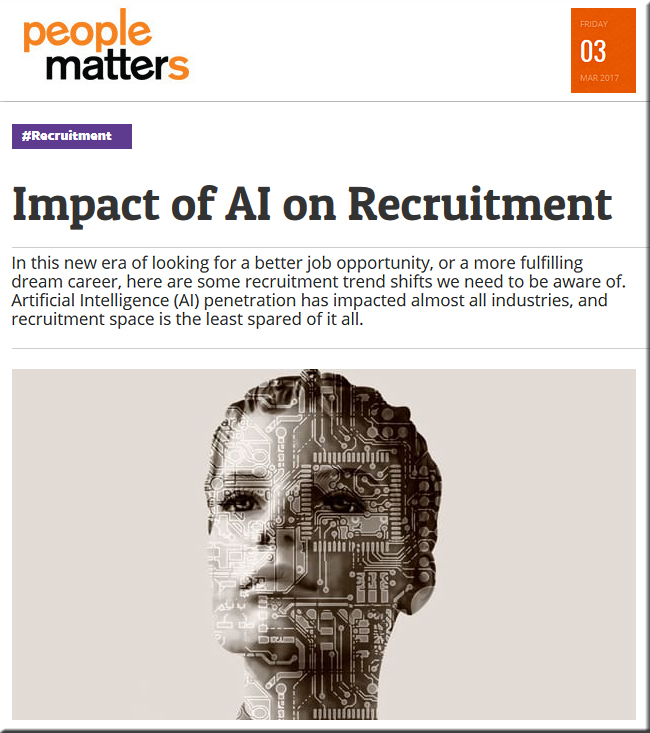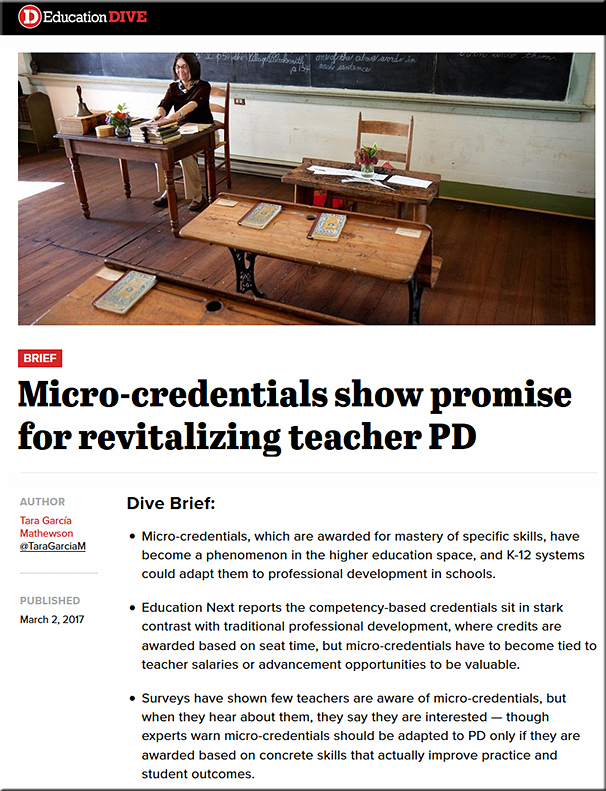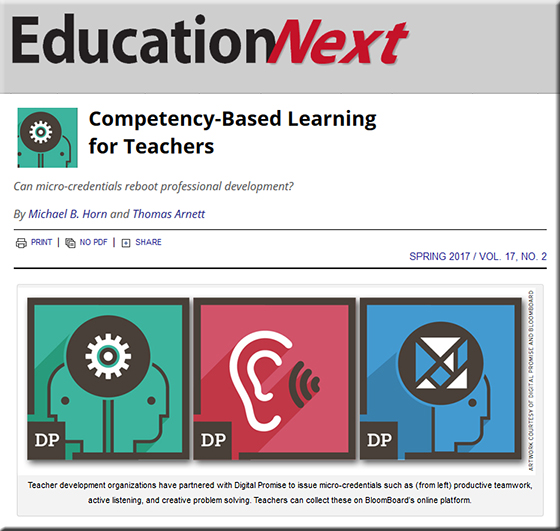12 #EmergingTechnologies aiming to transform #UX (#AI #AR #ML #bigdata #IoT) https://t.co/1DO0qwjNc0 HT @MikeQuindazzi #LTW #VivaTech pic.twitter.com/wWahBIc0qD
— Evan Kirstel (@evankirstel) June 14, 2017
The Classroom of Tomorrow: A Panel Discussion — sponsored by Kaltura
Description:
Technology is changing the way we approach education, rapidly. But what will tomorrow’s classroom actually look like? We’ve invited some leading experts for a spirited debate about what the future holds for educational institutions. From personalization to predictive analytics to portable digital identities, we’ll explore the biggest changes coming. We’ll see how new technologies might interact with changing demographics, business models, drop out rates, and more.
Panelists:
- David Nirenberg – Dean of the Division of the Social Sciences, University of Chicago
- Rick Kamal – Chief Technology Officer, Harvard Business School, HBX
- Gordon Freedman – President, National Laboratory for Education Transformation
- Michael Markowitz – Entrepreneur and Investor, Education
- Dr Michal Tsur – Co-founder and President, Kaltura
Also see:
- Roadmap to the Future — by Dr Michal Tsur – Co-founder and President, Kaltura
What are some of the leading trends emerging from the educational technology space? Michal Tsur takes you on a quick tour of big trends you should be aware of. Then, get a glimpse of Kaltura’s own roadmap for lecture capture and more.
Regarding the above items, some thoughts from DSC:
Kaltura did a nice job of placing the focus on a discussion about the future of the classroom as well as on some trends to be aware of, and not necessarily on their own company (this was especially the case in regards to the panel discussion). They did mention some things about their newest effort, Kaltura Lecture Capture, but this was kept to a very reasonable amount.
A question/reflection from DSC:
Will #MOOCs provide the necessary data for #AI-based intelligent agents/algorithms? Reminds me of Socratic.org:
Somewhat related:
- Elon Musk’s A.I. project is making humans teach robots through VR in a big breakthrough moment — from cnbc.com by Arjun Kharpal
OpenAI has developed a way to use humans and virtual reality to teach a robot how to carry out a task.
The robot uses artificial intelligence to process images and carry out the task.
OpenAI is a non-profit research organization backed by several big names including Elon Musk.
4 Ways Technology Is Changing Recruiting — from blog.hrtechweekly.com by Ji-A Min
Excerpt:
AI for recruiting
Industry statistics estimate 75 percent of resumes received for a role are screened out. This adds up to the hundreds of hours a recruiter wastes reading unqualified resumes per year. As one of recruiting’s biggest bottlenecks, resume screening is in dire need of better tools to help recruiters manage their time more effectively. This is why AI for recruiting is the biggest topic in HR tech right now. AI and recruiting are a natural fit because AI requires a lot of data to learn and large companies often have millions of resumes in their ATS.
Recruiting software that uses artificial intelligence can automate the screening process by learning the experience, skills, and qualifications required for the job and then shortlisting, ranking, and grading new candidates who match the requirements (e.g., from A to D). This type of AI recruiting software can also be used to source candidates from external databases such as Indeed and CareerBuilder or find previous candidates in your existing ATS database by applying the same learning ability to match candidates to an open req. By automating the manual processes of resume screening and candidate matching, companies who use AI recruiting software have reduced their screening costs by 75%.
Comment from DSC:
This is exactly why I tell my students to be sure they have an account on LinkedIn — which is owned by Microsoft. A piece of Microsoft will likely traverse down the AI-based pathway. (I also encourage them to have other pieces of their digital/online-based footprint such as an account on Twitter as well as their own WordPress-based blog). Data mining and the use of AI for hiring will only pick up steam from here on out. If you don’t exist online, you had better have a lot of contacts and foots in the doors elsewhere.
Today more than ever, finding top talent will depend on a recruiter’s ability to intelligently automate their workflow.
Google is shifting their focus from Search to artificial intelligence, CEO says — from zmescience.com by
Excerpt:
While delivering Google’s first quarterly income report on Thursday, the company’s CEO said that Google is transitioning — the search-engine giant will become an A.I.-first company.
“We continue to set the pace in machine learning and A.I. research,” said Google CEO Sundar Pichai said in a call [embedded at the end of the article] to investors on Thursday to report the company’s Q1 2017 earnings.
“We’re transitioning to an A.I.-first company.”
A revolutionary partnership: How artificial intelligence is pushing man and machine closer together — from pcw.com
Excerpt:
With more than $5 billion in 605 deals of VC investment over last 2 years, artificial intelligence (AI) is poised to have a transformative effect on consumer, enterprise, and government markets around the world. While there are certainly obstacles to overcome, consumers believe that AI has the potential to assist in medical breakthroughs, democratize costly services, elevate poor customer service, and even free up an overburdened workforce. We dug deeper into those perceptions through an online survey of consumers and business decision makers, and an expert salon with thought leaders in the field. This original research unpacks key ways AI may impact our world, delving into its implications for society, service, and management.
Also see:
AI has the potential to become a great equalizer. More than half of consumers believe AI will provide educational help to disadvantaged schoolchildren. Over 40% also believe AI will expand access to financial, medical, legal, and transportation services to those with lower incomes.
Consumers also see the value in sharing their personal information for the greater good: 62% would share their data to help relieve traffic in their cities and 57% would do so to further medical breakthroughs.
Brace yourselves: AI is set to explode in higher ed in the next 4 years –from ecampusnews.com by Laura Ascione
As AI grows in the education sector, its impact could be felt in student learning programs, websites and admissions programs
Excerpt:
A new report predicts that artificial intelligence (AI) in the U.S. education sector will grow 47.5 percent through 2021.
The report, Artificial Intelligence Market in the U.S. Education Sector 2017-2021, is based on in-depth market analysis with inputs from industry experts.
One of the major trends surrounding AI and education is AI-powered educational games. Because games have the potential to engage students while teaching them challenging education concepts in an engaging manner, vendors are incorporating AI features into games to enhance their interactivity.
Educational games that include adaptive learning features give students frequent and timely suggestions for a guided learning experience.
From DSC:
I can’t say how many AI-based solutions we’ll see within higher education in the next 4 years…it could be a lot…it could be a little. But it will happen. At some point, it will happen.
The use of AI will likely play a key role in a future organization that I’m calling the Next Amazon.com of Higher Education. AI will likely serve as a foundational piece of what futurist Thomas Frey claims will be the largest company on the internet: “an education-based company that we haven’t heard of yet.” (source)
Web-based learner profiles and blockchain-based technologies should also be on our radars, and are relevant in this discussion.
Also see:
Key questions answered in this report
- What will the market size be in 2021 and what will the growth rate be?
- What are the key market trends?
- What is driving this market?
- What are the challenges to market growth?
- Who are the key vendors in this market space?
- What are the market opportunities and threats faced by the key vendors?
- What are the strengths and weaknesses of the key vendors?
Q&A: Artificial Intelligence Expert Shares His Vision of the Future of Education — from edtechmagazine.com by Amy Burroughs
Artificial intelligence expert Joseph Qualls believes AI can solve some of the biggest challenges facing higher education — and the change is already underway.
Excerpts:
EDTECH: What AI applications might we see in higher education?
QUALLS: You are going to see a massive change in education from K–12 to the university. The thought of having large universities and large faculties teaching students is probably going to go away — not in the short-term, but in the long-term. You will have a student interact with an AI system that will understand him or her and provide an educational path for that particular student. Once you have a personalized education system, education will become much faster and more enriching. You may have a student who can do calculus in the sixth grade because AI realized he had a mathematical sense. That personalized education is going to change everything.
The Dark Secret at the Heart of AI — from technologyreview.com by Will Knight
No one really knows how the most advanced algorithms do what they do. That could be a problem.
Excerpt:
The mysterious mind of this vehicle points to a looming issue with artificial intelligence. The car’s underlying AI technology, known as deep learning, has proved very powerful at solving problems in recent years, and it has been widely deployed for tasks like image captioning, voice recognition, and language translation. There is now hope that the same techniques will be able to diagnose deadly diseases, make million-dollar trading decisions, and do countless other things to transform whole industries.
But this won’t happen—or shouldn’t happen—unless we find ways of making techniques like deep learning more understandable to their creators and accountable to their users. Otherwise it will be hard to predict when failures might occur—and it’s inevitable they will. That’s one reason Nvidia’s car is still experimental.
“Whether it’s an investment decision, a medical decision, or maybe a military decision, you don’t want to just rely on a ‘black box’ method.”
…
This raises mind-boggling questions. As the technology advances, we might soon cross some threshold beyond which using AI requires a leap of faith. Sure, we humans can’t always truly explain our thought processes either—but we find ways to intuitively trust and gauge people. Will that also be possible with machines that think and make decisions differently from the way a human would? We’ve never before built machines that operate in ways their creators don’t understand. How well can we expect to communicate—and get along with—intelligent machines that could be unpredictable and inscrutable? These questions took me on a journey to the bleeding edge of research on AI algorithms, from Google to Apple and many places in between, including a meeting with one of the great philosophers of our time.
NMC Horizon Report > 2017 Library Edition — from nmc.org
Excerpt:
What is on the five-year horizon for academic and research libraries? Which trends and technology developments will drive transformation? What are the critical challenges and how can we strategize solutions? These questions regarding technology adoption and educational change steered the discussions of 77 experts to produce the NMC Horizon Report: 2017 Library Edition, in partnership with the University of Applied Sciences (HTW) Chur, Technische Informationsbibliothek (TIB), ETH Library, and the Association of College & Research Libraries (ACRL). Six key trends, six significant challenges, and six developments in technology profiled in this report are poised to impact library strategies, operations, and services with regards to learning, creative inquiry, research, and information management. The three sections of this report constitute a reference and technology planning guide for librarians, library leaders, library staff, policymakers, and technologists.
Tech giants grapple with the ethical concerns raised by the AI boom — from technologyreview.com by Tom Simonite
As machines take over more decisions from humans, new questions about fairness, ethics, and morality arise.
Excerpt:
With great power comes great responsibility—and artificial-intelligence technology is getting much more powerful. Companies in the vanguard of developing and deploying machine learning and AI are now starting to talk openly about ethical challenges raised by their increasingly smart creations.
“We’re here at an inflection point for AI,” said Eric Horvitz, managing director of Microsoft Research, at MIT Technology Review’s EmTech conference this week. “We have an ethical imperative to harness AI to protect and preserve over time.”
Horvitz spoke alongside researchers from IBM and Google pondering similar issues. One shared concern was that recent advances are leading companies to put software in positions with very direct control over humans—for example in health care.
59 impressive things artificial intelligence can do today — from businessinsider.com by Ed Newton-Rex
Excerpt:
But what can AI do today? How close are we to that all-powerful machine intelligence? I wanted to know, but couldn’t find a list of AI’s achievements to date. So I decided to write one. What follows is an attempt at that list. It’s not comprehensive, but it contains links to some of the most impressive feats of machine intelligence around. Here’s what AI can do…
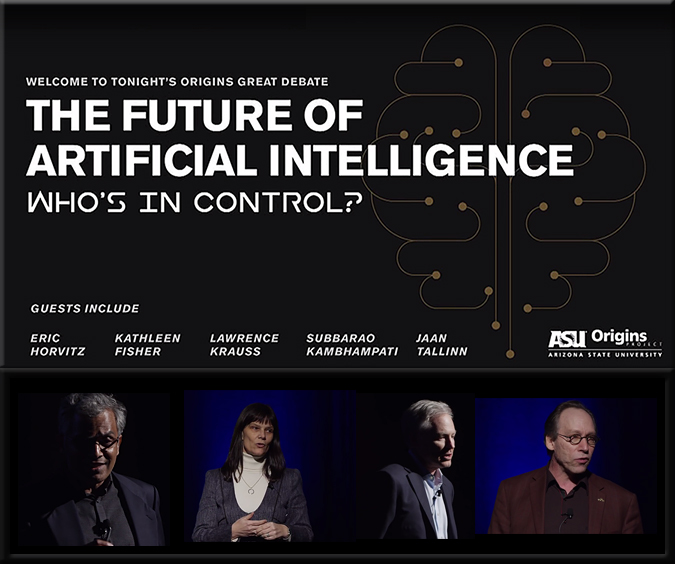
Recorded Saturday, February 25th, 2017 and published on Mar 16, 2017
Description:
Will progress in Artificial Intelligence provide humanity with a boost of unprecedented strength to realize a better future, or could it present a threat to the very basis of human civilization? The future of artificial intelligence is up for debate, and the Origins Project is bringing together a distinguished panel of experts, intellectuals and public figures to discuss who’s in control. Eric Horvitz, Jaan Tallinn, Kathleen Fisher and Subbarao Kambhampati join Origins Project director Lawrence Krauss.
Description:
Elon Musk, Stuart Russell, Ray Kurzweil, Demis Hassabis, Sam Harris, Nick Bostrom, David Chalmers, Bart Selman, and Jaan Tallinn discuss with Max Tegmark (moderator) what likely outcomes might be if we succeed in building human-level AGI, and also what we would like to happen. The Beneficial AI 2017 Conference: In our sequel to the 2015 Puerto Rico AI conference, we brought together an amazing group of AI researchers from academia and industry, and thought leaders in economics, law, ethics, and philosophy for five days dedicated to beneficial AI. We hosted a two-day workshop for our grant recipients and followed that with a 2.5-day conference, in which people from various AI-related fields hashed out opportunities and challenges related to the future of AI and steps we can take to ensure that the technology is beneficial.
(Below emphasis via DSC)
IBM and Ricoh have partnered for a cognitive-enabled interactive whiteboard which uses IBM’s Watson intelligence and voice technologies to support voice commands, taking notes and actions and even translating into other languages.
The Intelligent Workplace Solution leverages IBM Watson and Ricoh’s interactive whiteboards to allow to access features via using voice. It makes sure that Watson doesn’t just listen, but is an active meeting participant, using real-time analytics to help guide discussions.
Features of the new cognitive-enabled whiteboard solution include:
- Global voice control of meetings: Once a meeting begins, any employee, whether in-person or located remotely in another country, can easily control what’s on the screen, including advancing slides, all through simple voice commands using Watson’s Natural Language API.
- Translation of the meeting into another language: The Intelligent Workplace Solution can translate speakers’ words into several other languages and display them on screen or in transcript.
- Easy-to-join meetings: With the swipe of a badge the Intelligent Workplace Solution can log attendance and track key agenda items to ensure all key topics are discussed.
- Ability to capture side discussions: During a meeting, team members can also hold side conversations that are displayed on the same whiteboard.
From DSC:
Holy smokes!
If you combine the technologies that Ricoh and IBM are using with their new cognitive-enabled interactive whiteboard with what Bluescape is doing — by providing 160 acres of digital workspace that’s used to foster collaboration (and to do so whether you are working remoting or working with others in the same physical space) — and you have one incredibly powerful platform!
#NLP | #AI | #CognitiveComputing | #SmartClassrooms
#LearningSpaces |#Collaboration | #Meetings
AI Market to Grow 47.5% Over Next Four Years — from campustechnology.com by Richard Chang
Excerpt:
The artificial intelligence (AI) market in the United States education sector is expected to grow at a compound annual growth rate of 47.5 percent during the period 2017-2021, according to a new report by market research firm Research and Markets.
Amazon deepens university ties in artificial intelligence race — from by Jeffrey Dastin
Excerpt:
Amazon.com Inc has launched a new program to help students build capabilities into its voice-controlled assistant Alexa, the company told Reuters, the latest move by a technology firm to nurture ideas and talent in artificial intelligence research.
…
Amazon, Alphabet Inc’s Google and others are locked in a race to develop and monetize artificial intelligence. Unlike some rivals, Amazon has made it easy for third-party developers to create skills for Alexa so it can get better faster – a tactic it now is extending to the classroom.
The WebMD skill for Amazon’s Alexa can answer all your medical questions — from digitaltrends.com by Kyle Wiggers
WebMD is bringing its wealth of medical knowledge to a new form factor: Amazon’s Alexa voice assistant.
Excerpt:
Alexa, Amazon’s brilliant voice-activated smart assistant, is a capable little companion. It can order a pizza, summon a car, dictate a text message, and flick on your downstairs living room’s smart bulb. But what it couldn’t do until today was tell you whether that throbbing lump on your forearm was something that required medical attention. Fortunately, that changed on Tuesday with the introduction of a WebMD skill that puts the service’s medical knowledge at your fingertips.
Addendum:
- How artificial intelligence is taking Asia by storm — from techwireasia.com by Samantha Cheh
Excerpt:
Lately it seems as if everyone is jumping onto the artificial intelligence bandwagon. Everyone, from ride-sharing service Uber to Amazon’s logistics branch, is banking on AI being the next frontier in technological innovation, and are investing heavily in the industry.That’s likely truest in Asia, where the manufacturing engine which drove China’s growth is now turning its focus to plumbing the AI mine for gold.
Despite Asia’s relatively low overall investment in AI, the industry is set to grow. Fifty percent of respondents in KPMG’s AI report said their companies had plans to invest in AI or robotic technology.
Investment in AI is set to drive venture capital investment in China in 2017. Tak Lo, of Hong Kong’s Zeroth, notes there are more mentions of AI in Chinese research papers than there are in the US.
China, Korea and Japan collectively account for nearly half the planet’s shipments of articulated robots in the world.
Artificial Intelligence – Research Areas
The Blockchain Revolution and Higher Education — from er.educause.edu by Don Tapscott and Alex Tapscott
The blockchain provides a rich, secure, and transparent platform on which to create a global network for higher learning. This Internet of value can help to reinvent higher education in a way the Internet of information alone could not.
Excerpt:
What will be the most important technology to change higher education? In our view, it’s not big data, the social web, MOOCs, virtual reality, or even artificial intelligence. We see these as components of something new, all enabled and transformed by an emerging technology called the blockchain.
OK, it’s not the most sonorous word ever, sounding more like a college football strategy than a transformative technology. Yet, sonorous or not, the blockchain represents nothing less than the second generation of the Internet, and it holds the potential to disrupt money, business, government, and yes, higher education.
The opportunities for innovators in higher education fall into four categories:
- Identity and Student Records: How we identify students; protect their privacy; measure, record, and credential their accomplishments; and keep these records secure
- New Pedagogy: How we customize teaching to each student and create new models of learning
- Costs (Student Debt): How we value and fund education and reward students for the quality of their work
- The Meta-University: How we design entirely new models of higher education so that former MIT President Chuck Vest’s dream can become a reality1
The blockchain may help us change the relationships among colleges and universities and, in turn, their relationship to society.
Let us explain.
What if there was an Internet of value — a global, distributed, highly secure platform, ledger, or database where we could store and exchange things of value and where we could trust each other without powerful intermediaries? That is the blockchain.
From DSC:
The quote…
In 2006, MIT President Emeritus Vest offered a tantalizing vision of what he called the meta-university. In the open-access movement, he saw “a transcendent, accessible, empowering, dynamic, communally constructed framework of open materials and platforms on which much of higher education worldwide can be constructed or enhanced.”
…made me wonder if this is where a vision that I’m tracking called Learning from the Living [Class] Room is heading. Also, along these lines, futurist Thomas Frey believes
“I’ve been predicting that by 2030 the largest company on the internet is going to be an education-based company that we haven’t heard of yet,” Frey, the senior futurist at the DaVinci Institute think tank, tells Business Insider. (source)
Blockchain could be a key piece of this vision.
The Enterprise Gets Smart
Companies are starting to leverage artificial intelligence and machine learning technologies to bolster customer experience, improve security and optimize operations.
Excerpt:
Assembling the right talent is another critical component of an AI initiative. While existing enterprise software platforms that add AI capabilities will make the technology accessible to mainstream business users, there will be a need to ramp up expertise in areas like data science, analytics and even nontraditional IT competencies, says Guarini.
“As we start to see the land grab for talent, there are some real gaps in emerging roles, and those that haven’t been as critical in the past,” Guarini says, citing the need for people with expertise in disciplines like philosophy and linguistics, for example. “CIOs need to get in front of what they need in terms of capabilities and, in some cases, identify potential partners.”
Asilomar AI Principles
These principles were developed in conjunction with the 2017 Asilomar conference (videos here), through the process described here.
Artificial intelligence has already provided beneficial tools that are used every day by people around the world. Its continued development, guided by the following principles, will offer amazing opportunities to help and empower people in the decades and centuries ahead.
Research Issues
1) Research Goal: The goal of AI research should be to create not undirected intelligence, but beneficial intelligence.
2) Research Funding: Investments in AI should be accompanied by funding for research on ensuring its beneficial use, including thorny questions in computer science, economics, law, ethics, and social studies, such as:
- How can we make future AI systems highly robust, so that they do what we want without malfunctioning or getting hacked?
- How can we grow our prosperity through automation while maintaining people’s resources and purpose?
- How can we update our legal systems to be more fair and efficient, to keep pace with AI, and to manage the risks associated with AI?
- What set of values should AI be aligned with, and what legal and ethical status should it have?
3) Science-Policy Link: There should be constructive and healthy exchange between AI researchers and policy-makers.
4) Research Culture: A culture of cooperation, trust, and transparency should be fostered among researchers and developers of AI.
5) Race Avoidance: Teams developing AI systems should actively cooperate to avoid corner-cutting on safety standards.
Ethics and Values
6) Safety: AI systems should be safe and secure throughout their operational lifetime, and verifiably so where applicable and feasible.
7) Failure Transparency: If an AI system causes harm, it should be possible to ascertain why.
8) Judicial Transparency: Any involvement by an autonomous system in judicial decision-making should provide a satisfactory explanation auditable by a competent human authority.
9) Responsibility: Designers and builders of advanced AI systems are stakeholders in the moral implications of their use, misuse, and actions, with a responsibility and opportunity to shape those implications.
10) Value Alignment: Highly autonomous AI systems should be designed so that their goals and behaviors can be assured to align with human values throughout their operation.
11) Human Values: AI systems should be designed and operated so as to be compatible with ideals of human dignity, rights, freedoms, and cultural diversity.
12) Personal Privacy: People should have the right to access, manage and control the data they generate, given AI systems’ power to analyze and utilize that data.
13) Liberty and Privacy: The application of AI to personal data must not unreasonably curtail people’s real or perceived liberty.
14) Shared Benefit: AI technologies should benefit and empower as many people as possible.
15) Shared Prosperity: The economic prosperity created by AI should be shared broadly, to benefit all of humanity.
16) Human Control: Humans should choose how and whether to delegate decisions to AI systems, to accomplish human-chosen objectives.
17) Non-subversion: The power conferred by control of highly advanced AI systems should respect and improve, rather than subvert, the social and civic processes on which the health of society depends.
18) AI Arms Race: An arms race in lethal autonomous weapons should be avoided.
Longer-term Issues
19) Capability Caution: There being no consensus, we should avoid strong assumptions regarding upper limits on future AI capabilities.
20) Importance: Advanced AI could represent a profound change in the history of life on Earth, and should be planned for and managed with commensurate care and resources.
21) Risks: Risks posed by AI systems, especially catastrophic or existential risks, must be subject to planning and mitigation efforts commensurate with their expected impact.
22) Recursive Self-Improvement: AI systems designed to recursively self-improve or self-replicate in a manner that could lead to rapidly increasing quality or quantity must be subject to strict safety and control measures.
23) Common Good: Superintelligence should only be developed in the service of widely shared ethical ideals, and for the benefit of all humanity rather than one state or organization.
Excerpts:
Creating human-level AI: Will it happen, and if so, when and how? What key remaining obstacles can be identified? How can we make future AI systems more robust than today’s, so that they do what we want without crashing, malfunctioning or getting hacked?
- Talks:
- Panel with Anca Dragan (Berkeley), Demis Hassabis (DeepMind), Guru Banavar (IBM), Oren Etzioni (Allen Institute), Tom Gruber (Apple), Jürgen Schmidhuber (Swiss AI Lab), Yann LeCun (Facebook/NYU), Yoshua Bengio (Montreal) (video)
- Superintelligence: Science or fiction? If human level general AI is developed, then what are likely outcomes? What can we do now to maximize the probability of a positive outcome? (video)
- Talks:
- Panel with Bart Selman (Cornell), David Chalmers (NYU), Elon Musk (Tesla, SpaceX), Jaan Tallinn (CSER/FLI), Nick Bostrom (FHI), Ray Kurzweil (Google), Stuart Russell (Berkeley), Sam Harris, Demis Hassabis (DeepMind): If we succeed in building human-level AGI, then what are likely outcomes? What would we like to happen?
- Panel with Dario Amodei (OpenAI), Nate Soares (MIRI), Shane Legg (DeepMind), Richard Mallah (FLI), Stefano Ermon (Stanford), Viktoriya Krakovna (DeepMind/FLI): Technical research agenda: What can we do now to maximize the chances of a good outcome? (video)
- Law, policy & ethics: How can we update legal systems, international treaties and algorithms to be more fair, ethical and efficient and to keep pace with AI?
- Talks:
- Panel with Martin Rees (CSER/Cambridge), Heather Roff-Perkins, Jason Matheny (IARPA), Steve Goose (HRW), Irakli Beridze (UNICRI), Rao Kambhampati (AAAI, ASU), Anthony Romero (ACLU): Policy & Governance (video)
- Panel with Kate Crawford (Microsoft/MIT), Matt Scherer, Ryan Calo (U. Washington), Kent Walker (Google), Sam Altman (OpenAI): AI & Law (video)
- Panel with Kay Firth-Butterfield (IEEE, Austin-AI), Wendell Wallach (Yale), Francesca Rossi (IBM/Padova), Huw Price (Cambridge, CFI), Margaret Boden (Sussex): AI & Ethics (video)
Description:
A portrait of the tools and technology that students of the future might encounter.
SXSW Announces Winners for 2017 Accelerator Pitch Event — from prnewswire.com
Pitch competition showcased global startups featuring cutting-edge innovation in 10 technology categories
Excerpt:
The winners of the 2017 SXSW Accelerator Pitch Event are:
- “Augmented & Virtual Reality”: Lampix
- “Enterprise & Smart Data”: Deep 6 Analytics
- “Entertainment & Content”: Laugh.ly
- “Health & Wearables”: Sound Scouts
- “Innovative World”: Thimble.io
- “Payment & FinTech”: CNote
- “Security & Privacy”: UnifyID
- “Social & Culture”: Lily
- “Sports”: Brizi
- “Transportation”: SPLT
From DSC:
In the future, will Microsoft — via data supplied by LinkedIn and Lynda.com — use artificial intelligence, big data, and blockchain-related technologies to match employers with employees/freelancers? If so, how would this impact higher education? Badging? Credentialing?
It’s something to put on our radars.

Excerpt:
A sneak peak on Recruitment in AI era
With global talent war at its peak, organisations are now looking at harnessing Artificial Intelligence (AI) capabilities, to use search optimisation tools, data analytics, and talent mapping to reach out to the right talent for crucial job roles. Technology has been revolutionising the way recruitment works with the entire process being now automated with ATS and other talent management softwares. This saves time and costs involved with recruiting for HR managers, whilst allowing them to do away with third-party service providers for talent sourcing such as employment bureaus and traditional recruitment agencies. With modern talent acquisition technology empowered by AI, the time taken for recruitment is halved and search narrowed to reach out to only the best talent that matches job requirements. There is no need for human intervention and manual personality matching to choose the best candidates for suitable job roles.
…
Talent mapping, with the help of big data, is definitely the next step in recruitment technology. With talent mapping, recruiters can determine their candidate needs well in advance and develop a strategic plan for hiring long-term. This includes filling any skill gaps, bolstering the team for sudden changes in the workplace, or just simply having suitable talent in mind for the future. All of these, when prepared ahead of time, can save companies the trouble and time in future. Recruiters who are able to understand how AI works, harness the technology to save on time and costs will be rewarded with improved quality of hires, enhanced efficiency, more productive workforce and less turnover.
From DSC:
At the recent Next Generation Learning Spaces Conference, in my introductory piece for our panel discussion, I relayed several ideas/areas that should be on our institutions’ radars. That is, at least someone at each of our institutions of higher education should be aware of these things and be pulse-checking them as time goes by.

One of these ideas/areas involved the use of blockchain technologies:
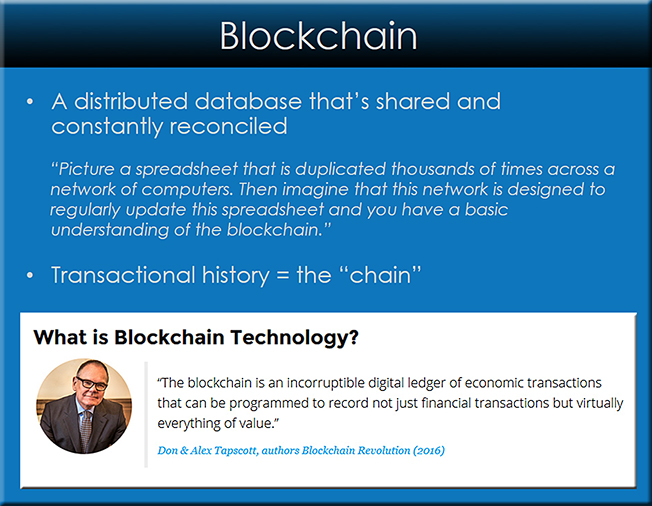
If #blockchain technologies are successful within the financial/banking world, then it’s highly likely that other use cases will be developed as well (i.e., the trust in blockchain-enabled applications will be there already).
Along those lines, if that occurs, then colleges and universities are likely to become only 1 of the feeds into someone’s cloud-based, lifelong learning profile. I’ve listed several more sources of credentials below:

Given the trend towards more competency-based education (CBE) and the increased experimentation with badges, blockchain could increasingly move onto the scene.
In fact, I could see a day when an individual learner will be able to establish who can and can’t access their learner profile, and who can and can’t feed information and updates into it.
Artificial intelligence and big data also come to mind here…and I put Microsoft on my radar a while back in this regard; as Microsoft (via LinkedIn and Lynda.com) could easily create online-based marketplaces matching employers with employees/freelancers.
Along these lines, see:
- The Mainstreaming of Alternative Credentials in Postsecondary Education — from by Deborah Keyek-Franssen
Excerpt:- The Context of Alternative Credentials
The past few years have seen a proliferation of new learning credentials ranging from badges and bootcamp certifications to micro-degrees and MOOC certificates. Although alternative credentials have been part of the fabric of postsecondary education and professional development for decades—think prior learning assessments like Advanced Placement or International Baccalaureate exams, or industry certifications—postsecondary institutions are increasingly unbundling their degrees and validating smaller chunks of skills and learning to provide workplace value to traditional and non-traditional students alike.Many are experimenting with alternative credentials to counter the typical binary nature of a degree. Certifications of learning or skills are conferred after the completion of a course or a few short courses in a related field. Students do not have to wait until all requirements for a degree are met before receiving a certificate of learning, but instead can receive one after a much shorter period of study. “Stackable” credentials are combined to be the equivalent of an undergraduate or graduate certificate (a micro-degree), or even a degree. - The National Discussion of Alternative Credentials
Discussions of alternative credentials are often responses to a persistent and growing critique of traditional higher educational institutions’ ability to meet workforce needs, especially because the cost to students for a four-year degree has grown dramatically over the past several decades. The increasing attention paid to alternative credentials brings to the fore questions such as what constitutes a postsecondary education, what role universities in particular should play vis-à-vis workforce development, and how we can assess learning and mastery.
- The Context of Alternative Credentials
Addendums added on 3/4/17, that show that this topic isn’t just for higher education, but could involve K-12 as well:










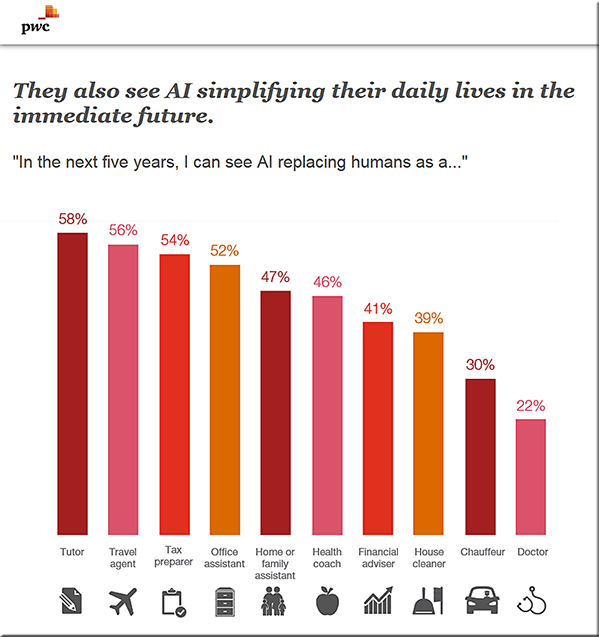
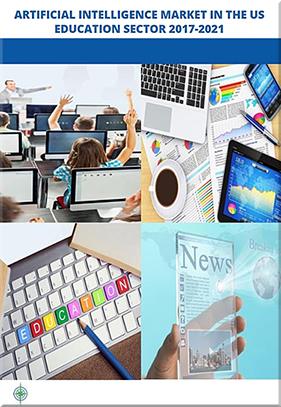
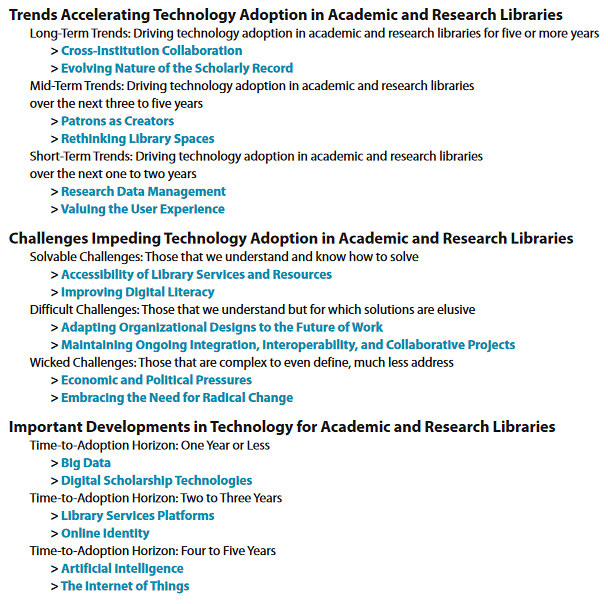
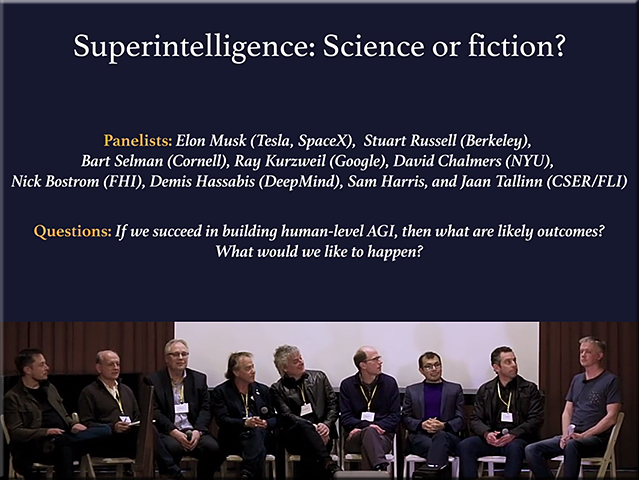

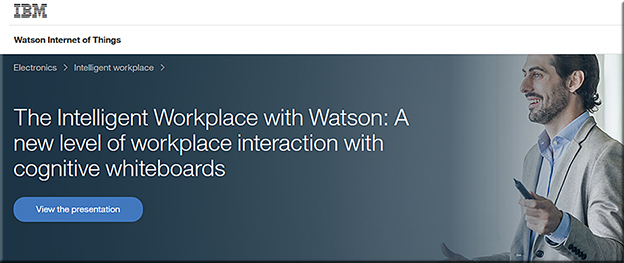

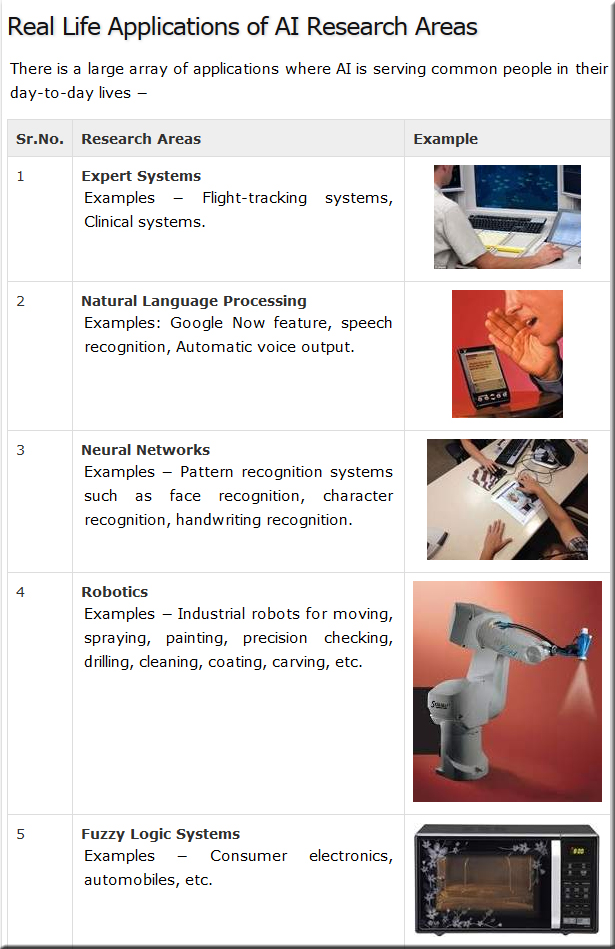
![The Living [Class] Room -- by Daniel Christian -- July 2012 -- a second device used in conjunction with a Smart/Connected TV](http://danielschristian.com/learning-ecosystems/wp-content/uploads/2012/07/The-Living-Class-Room-Daniel-S-Christian-July-2012.jpg)
